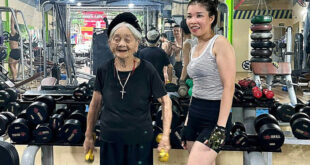Virtual singer Ann has not made much of an impression since debuting two weeks ago, and critics blame it on her limited looks and singing skills.
Her maiden music video “How to say I love you” has attracted 182,000 views, low compared to most human artists.
Data from Google Trends shows the singer and her song were searched most between March 14 and 16, shortly after her debut. Since then the figures have dropped by more than 90%.
Many people think Ann looks like a “singing machine” rather than a real singer.
Singer Hoang Bach has complimented the production crew behind Ann, but thinks his virtual colleague has “not made any impression.”
The crew put a lot of effort into researching, chose a tone that suits Vietnamese and added breathing sounds to make her voice as human sounding as possible with the help of digital technologies, he explains.
Ann’s singing technique is mechanical and simple, making the song predictable and bland.
Musician Duong Cam says Ann’s appearance is not too human, and so the MV looks like a video with animated illustrations that is common on YouTube.
Ann’s voice sounds similar to that of Thuy Chi’s but lacks emotion or the proper stresses, he adds.
Another musician, Nguyen Ha, says Ann is supposed to be humanlike, but her facial expressions and the movements of her lips and eyes are off.
In the comments section of the MV on YouTube, many point this out.
User Myhanh01 says: “Her voice was fine, easy to catch up. However, the biggest disadvantage was that the movement of her lips did not match the lyrics. She also lacked facial expression. Virtual singers are not new; Japan and China are the leaders in developing them. Ann was not unique or attractive.”
Ha says for the public to accept virtual singers, production crews need to give them time. Furthermore, instead of styling Ann as humanlike, the crew had better focus on her strengths that humans cannot match, she adds.
Bobo Dang, founder of BoBo Studio, the creator of Ann, says the crew also learned about their technical and technological limitations from the comments and feedback on social media, and will use them to improve Ann.
 |
|
Virtual singer Ann’s styling. Photo courtesy of Bobo Studio |
Ann is set to release a mini album in August and a second MV in December.
Instead of singing ballads like the first time around, she will perform upbeat songs in a higher, baby-like pitch.
The visuals and CGI (computer-generated imagery) will be improved to make them look more natural.
Bobo Dang says: “As time passes by we will do better. We are investing in technical and visual aspects and refining movements and improving our sense of what the public prefers.”
In other countries, virtual singers not only release MVs, but also hold live shows and sell merchandise. These are often more expensive than real artists.
In Vietnam, the majority of a singer’s income still comes from selling tickets to shows, and so Ann does not have as many revenue streams as her foreign counterparts.
Virtual singers are conquering leading Asian entertainment markets, especially Japan, China and South Korea. Some are even as popular as real artists.
A report by research company iiMedia shows the virtual artists industry in China generated CNY 3.5 billion (US$547 million) in 2020 and CNY 6 billion in 2o21
- Reduce Hair Loss with PURA D’OR Gold Label Shampoo
- Castor Oil Has Made a “Huge” Difference With Hair and Brow Growth
- Excessive hair loss in men: Signs of illness that cannot be subjective
- Dịch Vụ SEO Website ở Los Angeles, CA: đưa trang web doanh nghiệp bạn lên top Google
- Nails Salon Sierra Madre
 VnExpress News The News Gateway of Vietnam
VnExpress News The News Gateway of Vietnam





